Can you imagine having all these nutrients in your body without putting in too much effort? Sounds great, right? Well, the benefits of bone broth are endless. When you cook bones using low heat, the nutrients from them get extracted into the liquid, leaving behind only minerals and collagen. The latter is important because collagen helps keep our skin looking young and supple. If you don’t believe us, read on!
What is Bone Broth?

Bone Broth is a type of broth that is made by simmering the bones and other parts of animals in water for a long time.
It is an excellent source of minerals such as calcium, magnesium, and phosphorus. It also contains collagen, which can help reduce joint pain in people with arthritis or osteoarthritis. There are a variety of bones including:
Knee Bones: Knee Bones are ideal because they have a lot of cartilage on them.
Neck Bones: Neck Bones are best because they have lots of marrow inside them
Cooking time: The cooking time will vary depending on the size of the pot you use, but it can take anywhere from 12 to 24 hours to make bone broth. You know it’s done when it has a rich golden color.
Pressure cookers are not recommended because they can get too hot and destroy some of the nutrients in the broth.
The ingredients are: bones, organic herbs, apple cider vinegar, a bit of salt, black peppercorns, and ancient sea salt.
Bone broth is perfect to use in any recipe that calls for beef stock. You can make it plain, or add your favorite herbs. Some common herbs and spices are:
Fresh herbs, fresh thyme, star anise (think Pho flavors), peppercorn, rosemary, etc..
What are the Differences between Bone Broth & Regular Broth or Stock?
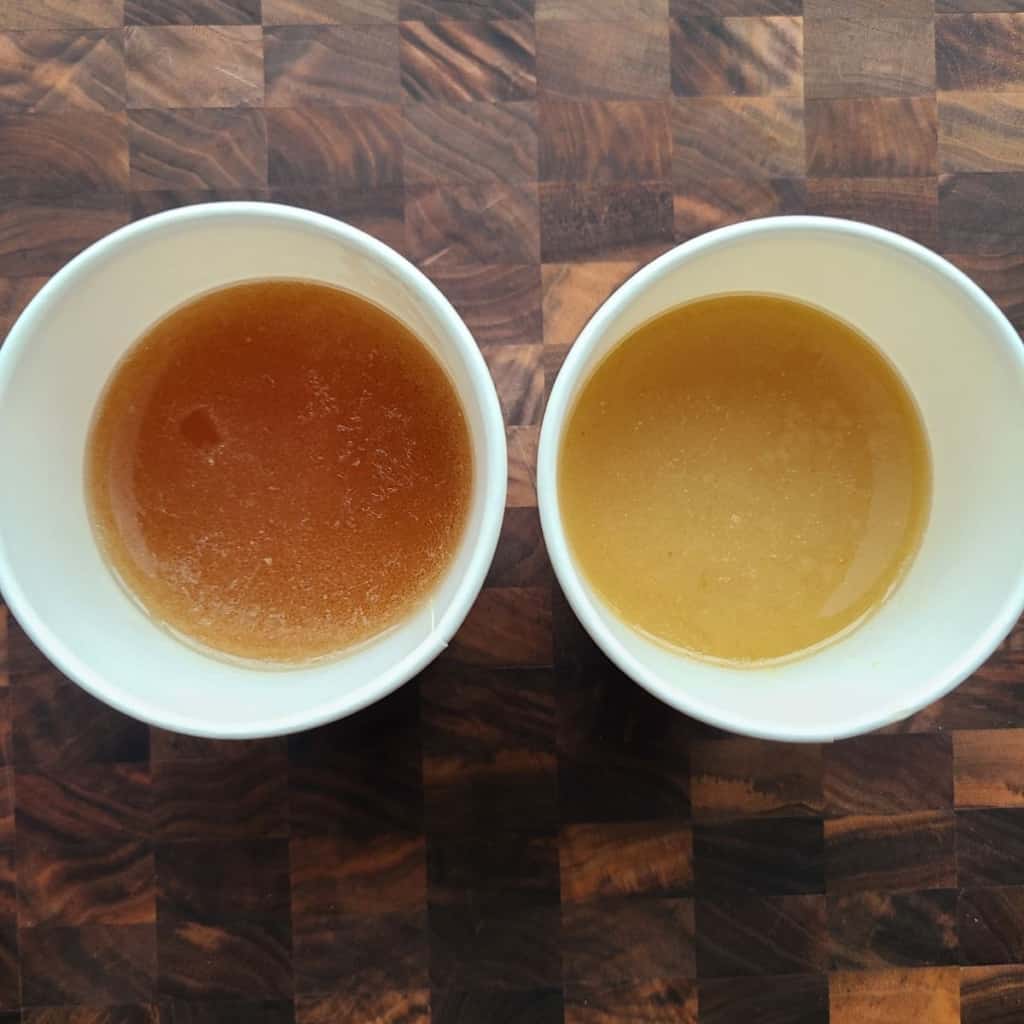
Bone broth, regular broth, and beef stock are all different ways to make a liquid based on the bones of animals.
Bone broth is made from bones that are boiled for a long time, which extracts minerals and gelatin from the bones. It’s similar to chicken or beef stock in that it’s a liquid that is used as a base for soups, stews, and sauces.
Regular broth is made from meat and vegetables that are boiled with water. It can be made from any type of meat—chicken or beef. You can also use vegetables like carrots and celery if you want to make vegetable broth. This type of broth doesn’t contain any bones at all, so it doesn’t have any gelatin or minerals in it.
Beef stock is made by boiling beef bones with water until they’re soft enough to eat! Beef stocks tend to be more flavorful than other types of stocks because they have extra fat and connective tissue attached to them when they’re cooked down into stock form.
What advantages does Bone Broth have?
The benefits are numerous. It is beneficial for the gut, joints, skin, hair, and nails.
Bone Broth is a rich source of collagen and gelatin. These two proteins are essential for healthy skin and hair. The amino acids also help to maintain healthy joints as well as improve gut health by reducing inflammation.
Bone broth has been shown to have many benefits, including:
- Reduces joint pain and inflammation
- Helps with digestive issues, such as IBS or Crohn’s Disease
- Improves sleep quality
- Supports collagen production in the skin, which leads to a better appearance and reduced wrinkles
What kinds of bones do you need?
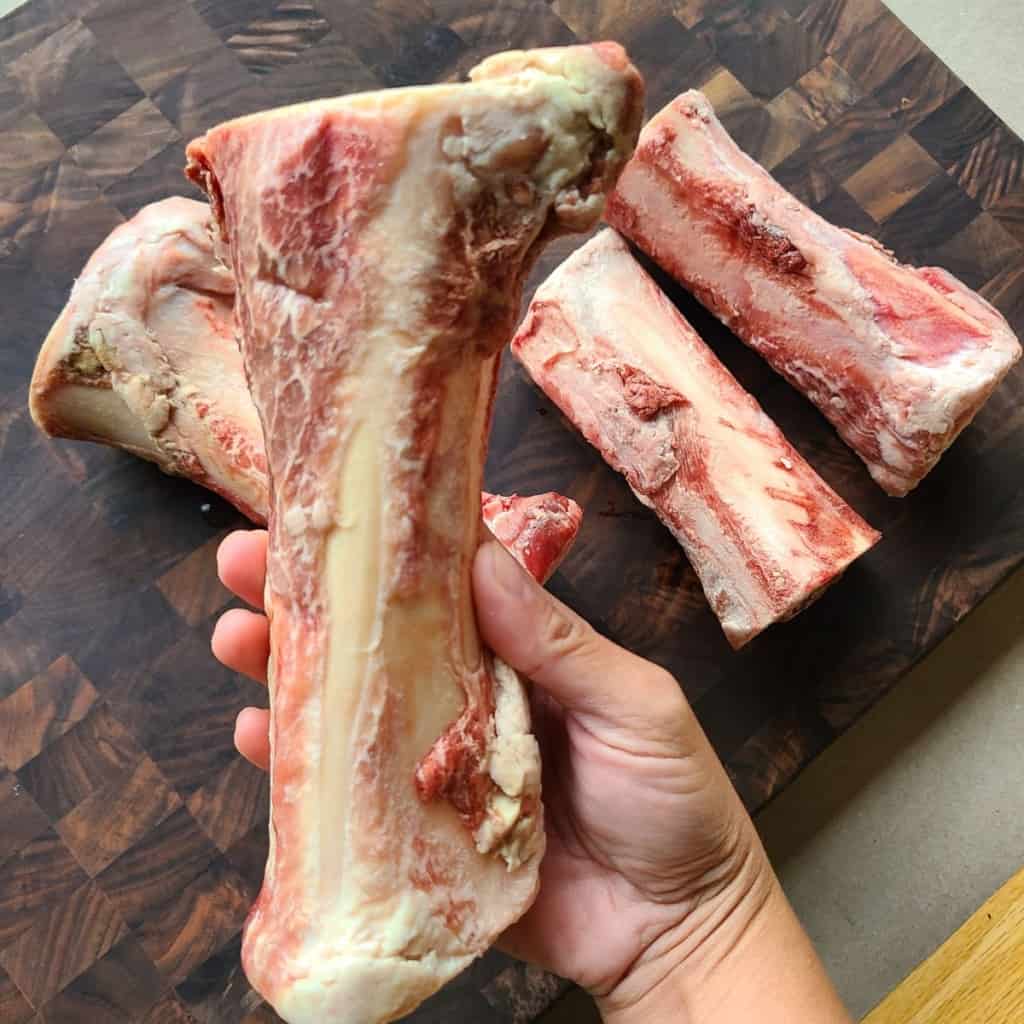
Bones from rudimentary animals are best – grass fed cows are best, but you may also use pastured chicken. Bones from rudimentary animals typically contains lots of bone marrow, which is a good source of nutrients for the body.
You can use:
- Beef Bones
- Leftover Bones
- Chicken Bones
- Pork Bones
- Marrow Bones
Type Of Recipes: The great thing about bone broth is that there are so many different ways to make it. You can use chicken bones, beef bones, pork bones, or any other animal bone.
And each type of bone will give it a different flavor. So if you’re looking for something new to try, why not experiment with different types of bones and see what you like best?
Common benefits you may receiving from incorporating bone broth into your diet
Bone broth is a very popular drink in the health and wellness community. It has a lot of health benefits that can be applied to various parts of the body.
The amino acids in bone broth can help with joint pain, collagen content for joints and connective tissue, and leaky gut syndrome. These are just a few of the many benefits that bone broth has to offer.
1) Joint Pain: Bone broth contains glucosamine which is used as an anti-inflammatory agent in the body. This benefit helps with joint pain and arthritis symptoms.
2) Joints: The collagen content in bone broth helps provide relief for arthritis symptoms because it provides nutrients to joints, cartilage, tendons, ligaments, and bones.
3) Connective Tissue: Bone broth also provides nutrients to connective tissue so it can heal better as well as promote healthy skin cells due to its collagen content.
4) Leaky Gut Syndrome: The gelatin found in bone broth can help heal the lining of the digestive tract, which may relieve symptoms of a leaky gut syndrome such as gas or bloating.
What Equipments is required to make stock at home?
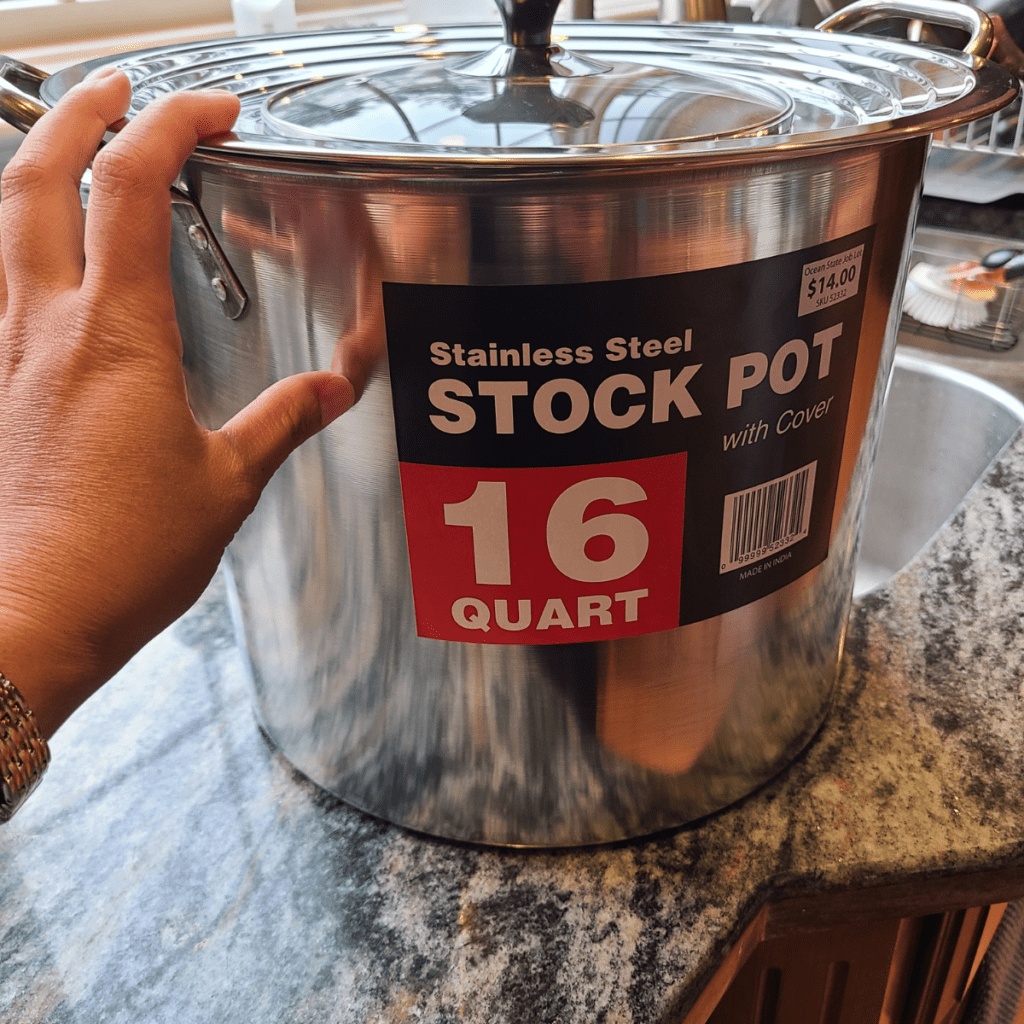
The equipment needed for making stock at home varies depending on what you are making. For example, if you are making beef bones, you might need a very large 16 qt or larger, especially if they are the longer pieces.
Try this 16-quart stock pot
 Buy Now →
Buy Now → (on Amazon)
If using chicken bones, a 8 quart pot might suffice.
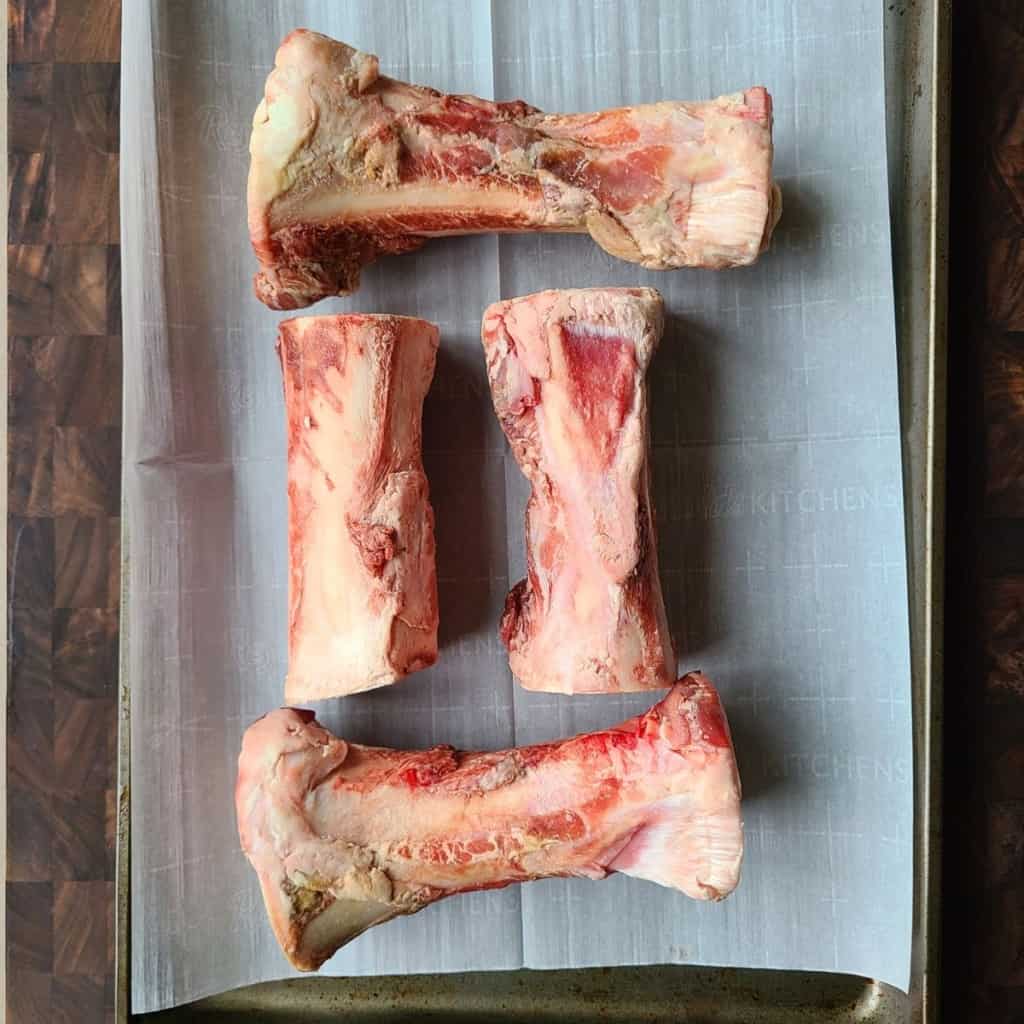
The equipment needed to make stock at home is a large stock pot (on Amazon), or slow cooker (on Amazon). If you’re using beef bones, sometimes the length of the bones will determine how tall or wide your pot needs to be. If you do not have a tall stock pot, be mindful when shopping for beef bones – it is nearly impossible to cut them into smaller sections at home. Since they are typically sold frozen – the butchers won’t be able to do it for you on the spot either.
Which bone works best for Bone Broth?
Bone broth is a staple for many who follow the paleo diet. Bone broth is a flavorful and nutrient-rich stock made by boiling animal bones, vegetables, and herbs in water. It’s a versatile ingredient that can be used in many different dishes, or enjoyed on its own as a warming and satisfying soup.
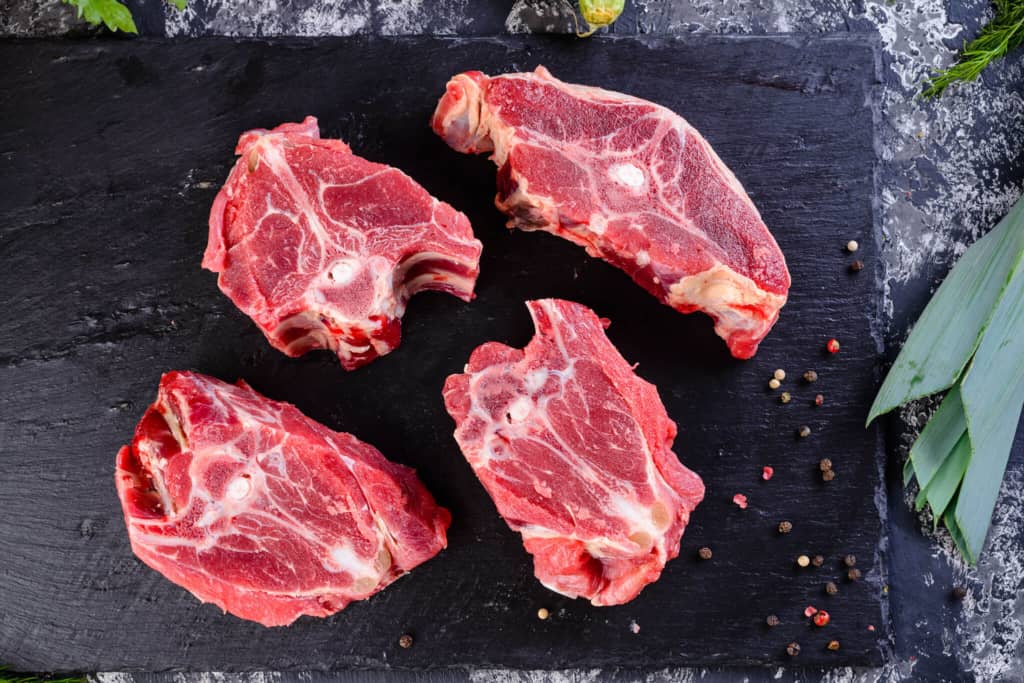
Pork bones are a great option for bone broth. They’re soft and have a good amount of collagen. The downside to pork bones is that they don’t have as much calcium as chicken or beef bones do.
Chicken bones are also very good for bone broth because they contain more calcium than other types of meat, but they can be harder to find and more expensive than pork or beef bones (pound-for-pound). You might want to ask your local butchery if you can buy chicken backs – unless they already sell them, typically this piece is discarded in the butchering process.
Beef bones are the best option if you want to make a batch of bone broth because they have the most marrow and collagen content out of all three types of animal bones.
The best bones for bone broth are typically the ones that have more connective tissue, such as marrow, tendons, and ligaments. The harder bones will also have more calcium and minerals that are essential to promote healing.
Where to buy bones for broth?
One can get bones from a variety of sources, including animal butchers, farmers, and even grocery stores. The best way to get bones for bone broth is to buy them at your local farmers’ market or grocery store.
I’ve seen them in the frozen meats section at Whole Foods and some grocery stores – typically $2.50 – $3.50/lb. Your local butchery or farm might be cheaper – I normally see them for $1.99/lb or less at the farm.
If you buy half a cow from Simpson’s Meats (which I highly recommend) – the bones and organs come free. Pound for pound, this is the ultimate best way to buy beef. The last time I bought a half a cow I received around 35 pounds of bones.
If you’re not sure where to get bones for bone broth, here are some options online:
https://sevensons.net/store/grass-fed-beef/bones
Making Bone Broth – step-by-step :
This recipe makes 14 cups of bone broth. I used 4.5 LBS of bone marrow, 6 quarts of water, and I did not skim the fat. The bones I bought were 100% grass-fed, so if you subscribe to influencers such as the Bulletproof Diet, Dave Asprey would tell you the fat is where all the nutrients are.

On the other hand, Dave Asprey says, if you do not have grass-fed bones, the fat is where all the toxins are hidden. Therefore, for this recipe, if you don’t use grass-fed bones, I would definitely skim the fat.
Step 1 – Roast the bones
Rinse the bones under cold water, and preheat the oven at 350 degrees F. Roast for 40 minutes for maximum flavor (you may skip this step, but I highly recommend it)
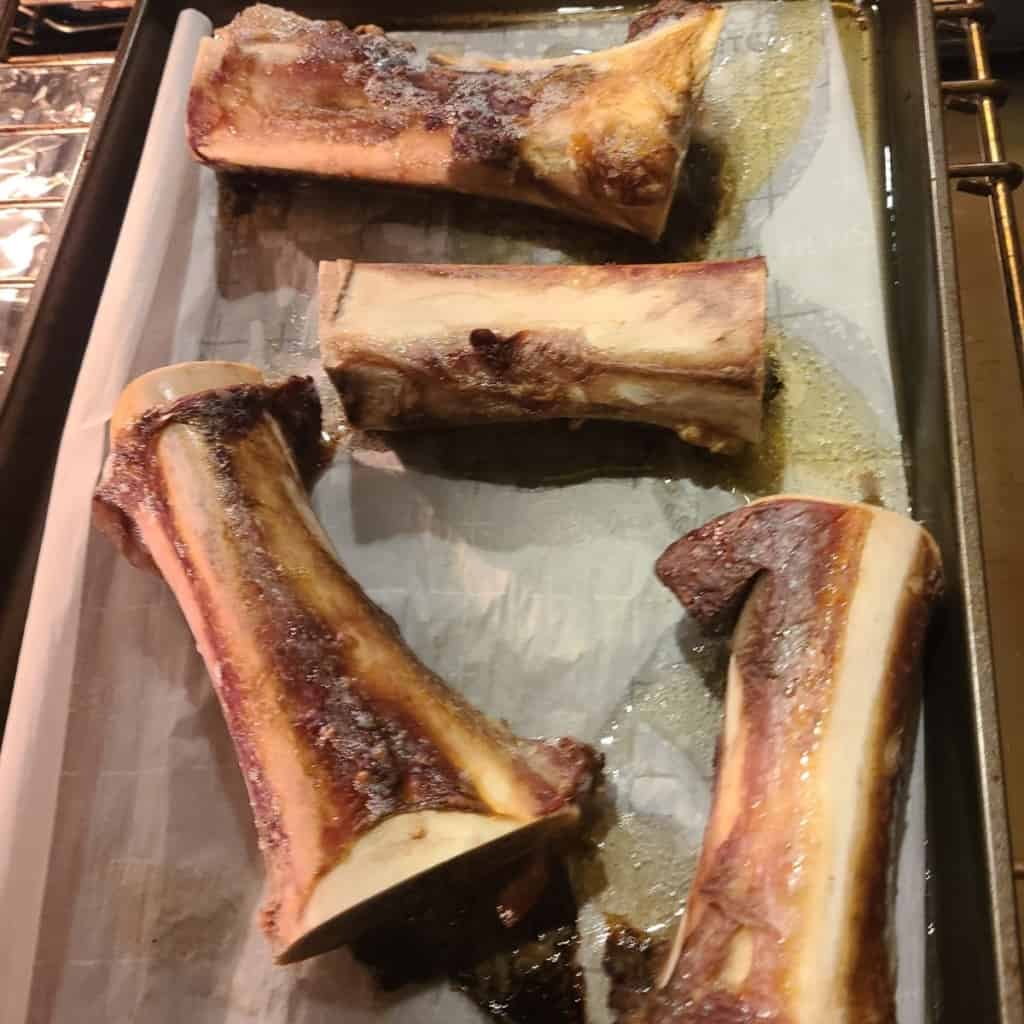
Step 2 – Simmer for 12-24 hours
In a large pot, bring to a boil and immediately lower the heat to simmer. If you are using large bones such as the ones I use, I would definitely do this for 24 hours. If you are using smaller bones, or using chicken bones instead, 12 hours would do.
I add a whole onion and some garlic cloves, but you can skip it if you want. Add a bouquet of herbs if you like. Lots of recipes recommend doing this, but I find that I do not like the flavor of the broth with any kind of herbs in it, so I don’t do it – use the whole onion. It adds a hint of sweetness to the bone broth.

Step 3 – Skim the Fat (optional)
Again, I used 100% grass-fed bones so I did not skim the fat, but you should skim the fat every once in a while if you are not using 100% grass-fed bones. According to health experts like Dave Asprey from BulletProof blog, this is where toxins hide in non grass-fed cows.
Step 4 – Add some sea salt and 1 tablespoon of apple cider vinegar
I use bone broth in recipes that calls for beef stock so I salt my broth. I also sometimes drink it plain, therefore I add the salt at this step. If you’re watching your sodium intake, or prefer to cook or drink broth that is unsalted you can skip the salt.
The acid in the apple cider vinegar helps extract the most nutrients and flavors from the bones. No worries – you won’t taste it at all.

Step 5 – Remove the solids
I use a coriander and put it on top of a large bowl to catch the drippings when I do this so it doesn’t make a mess. Make sure you get everything out so all you’re left with, is a smooth broth with nothing in it.
This is what it looks like once you’re done (on the left is broth with no fat, on the right is bone broth with fat on top)

Tips for this bone broth recipe
Tip 1 – Save the fat!
After roasting the bones, what you’re left with is a layer of fat that drips from inside the bone marrow – if you’ve eaten roasted bone marrow at the restaurant (canoe-cut lengthwise), you’ll remember that there’s a lot of fat worth dipping bread in from the bone marrow!
I save this fat for cooking. I buy a lot of ghee from 4th and Heart Ghee, and save the glasses. The fat you get from bone marrow is a very rich yellow color.
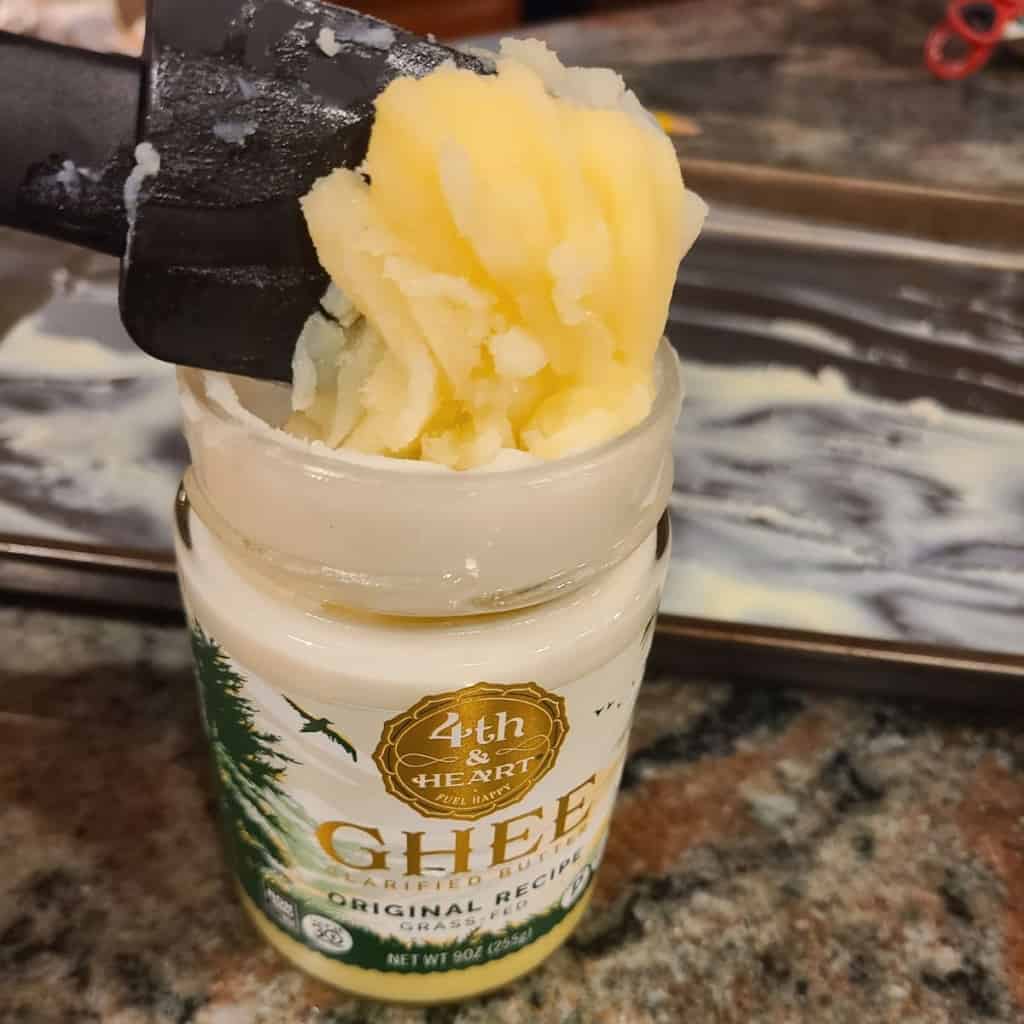
Again, I would not be doing this if the bones were not grass-fed. But I’ll leave health choices up to you – this is a food blog, not a health blog! Read more about this in my favorite book The BulletProof Diet.
Just don’t use it to cook veggies – I made this mistake once, and the broccoli tasted like bones! Lol, probably not the best way to eat your veggies. Use it for all meats and save the regular ghee for your veggies.
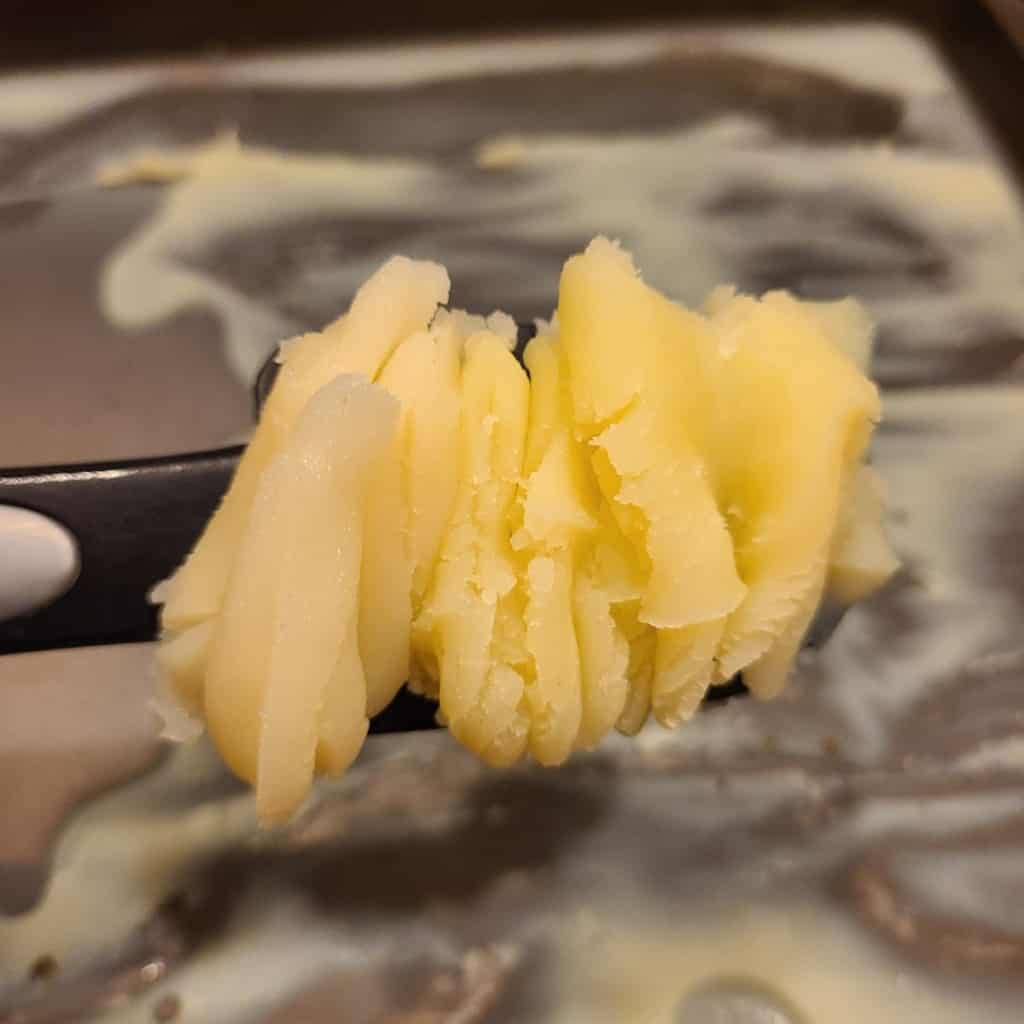
Tip 2 – Remove solids while still hot
I made the mistake once, of turning off the stove and “get it to later”. It was not fun since all the fat became solidified on the bones and meat. I then ended up wasting an additional 30 minutes just to bring it to a boil again and wait for it to cool down so I can work with it.
Tip 3 – Use a combination of bones from same animal
I once did not have enough beef bones so I combined some chicken bones and beef bones. It was not a fun mistake – the broth tasted really funny! Either use all chicken, or all pork, or all beef – no mixing and matching here!
Tip 4 – Store in 1-cup portions
Even though the paper cups I bought are for 2 cups, I store them in 1-cup portions because most recipes I work with calls for 1-cup of broth, or 1/2 cup of broth at a time. Also, if you drink bone broth for breakfast like some health experts do, keeping them portioned is helpful.

How to store bone broth
I buy those 16-oz paper soup cups from wholesale stores (or Amazon) and freeze them in 1-cup portions. Freeze up to 6 months, or store in fridge or up to 7 days.
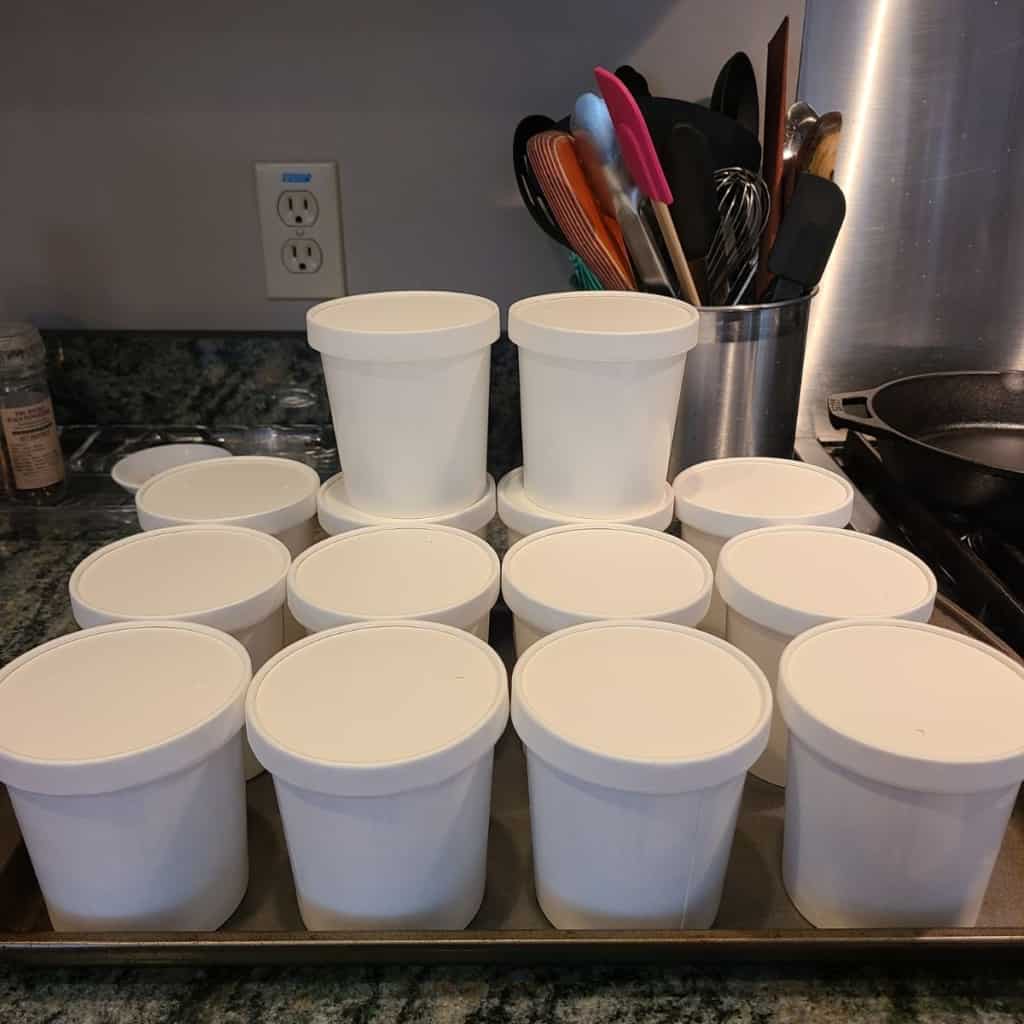
Tip: I used to store them in reusable plastic soup containers – but it was a pain to thaw them. With a paper cup, I slit the top a little bit, and tear it up and put the entire frozen chunk into a small saucepan. Takes less than 5 minutes to broth.
This recipe makes 14-cups (without skimming the fat). I imagine you might lose around 1 cup if you skim the fat. Be sure to date them! These paper cups make it so easy! I get these 16-oz paper cups for around fifty cents each on Amazon.

Other Soup Recipes You May Like:
Print
Simple Bone Broth Recipe
- Total Time: 8 hours 50 minutes
- Diet: Gluten Free
Description
Make healthy, nutritious bone broth for maximum health benefits
Ingredients
- 4–5 pounds of bones – your choice of chicken, beef, or pork
- 6 quarts of water
- 1 tablespoon apple cider vinegar
- (optional) vegetables:
- 2 carrots, chopped in large pieces
- 1 whole onion, peeled and leave whole
- 2 celery ribs, roughly chopped
- Sea salt to tatse
Instructions
- (optional) If using beef bones, roast them first at 375 degrees for 30 – 40 minutes. This helps the bone broth taste much deeper, and richer
- Put the roasted or unroasted bones in a large stockpot (or slow cooker (on Amazon)).
- Add optional vegetables, if using. Add 1 tablespoon apple cider vinegar (this helps extract the nutrients)
- Add enough water to cover the bones (and vegetables) plus 1 inch
- If using a stockpot on the stove – cover with lid, bring to a boil and immediately reduce to low. If using slow cooker (on Amazon), just turn it on low.
- Cook for 10-12 hours at least, up to a maximum of 24 house to extract the most flavor and nutrients from the bones
- Remove solid ingredients with a strainer.
Once cooled, refrigerate and use within several days, or freeze for up to 3 months.
Notes
If you’re using beef bones you might want to simmer for the total 24 hours. If using chicken bones, 8 – 12 hours will be enough. You know it’s done when the broth has a rich golden color. See recipe post for other notes about (save the fat for cooking later, store in paper cups, store in 1-cup portions, and use bones from same animal otherwise it will taste funny!)
- Prep Time: 50 minutes
- Cook Time: 8 hours
- Method: slow cook
